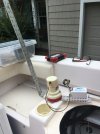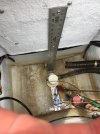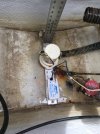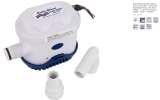- Joined
- Jan 17, 2023
- Messages
- 22
- Reaction score
- 4
- Points
- 3
- Age
- 56
- Model
- Seafarer
I need to replace the bilge pump in my new-to-me 1989 228 Seafarer. The pump looks ancient and I'm not likely to find a replacement that will snap into the old base. When I get a new one, I obviously don't want the mounting screws to penetrate through the hull but I can't figure out how thick the hull is. The question is how thick is the hull near the drain plug? What length mounting screws can be used safely.






